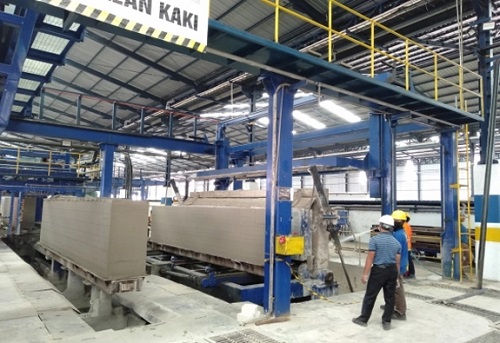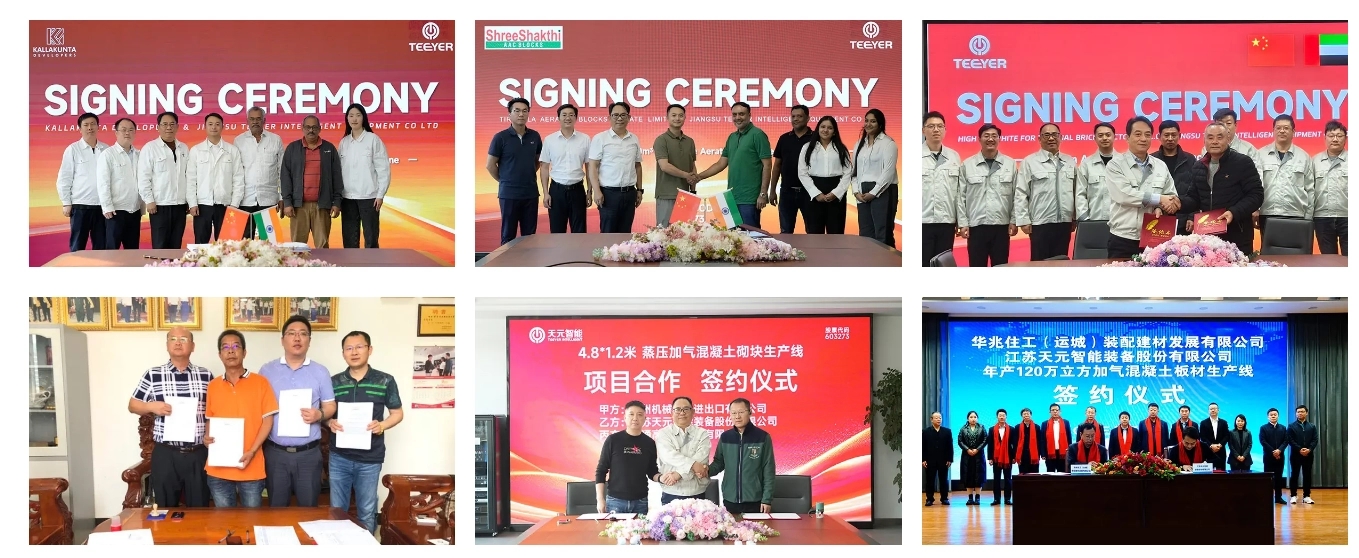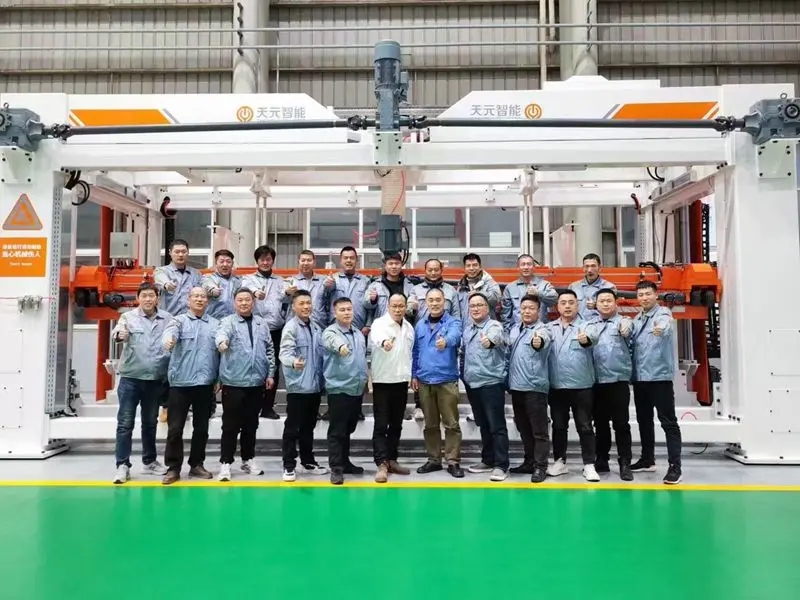The World’s Leading Supplier of AAC Production Line
English
- All
- Product Name
- Product Keyword
- Product Model
- Product Summary
- Product Description
- Multi Field Search
Views: 0 Author: Site Editor Publish Time: 2025-07-31 Origin: Site









Setting up an AAC block manufacturing plant in India , you should think about every cost before you begin the plant setup. AAC blocks are a good choice for building homes and offices. This green building material uses autoclaved aerated concrete. Each block is light and saves energy. AAC block manufacturing plants help you make blocks for today’s building needs. When you plan your investment, always check the plant location, block quality, raw materials, and concrete mix. Careful planning helps your plant support green building and gives you good value for your money.

When you want to start an AAC block manufacturing plant, you need to know the main setup cost. The amount depends on how big your plant is, how much work is done by machines, and what kind of equipment you pick. You also have to think about the price of land, machines, and raw materials.
Land costs are different in each place. If your aac block plant is close to a city or in an industrial area, land will cost more. Machines for autoclaved aerated concrete blocks include mixers, autoclaves, and cutting machines. These machines can be pricey, especially if you want the newest features. Raw materials like cement, lime, sand, and aluminum powder will also add to your starting costs.
Tip: Always check the latest prices for land, machines, and raw materials before you start. This helps you plan your budget and avoid surprises.
You may face some common problems when setting up an AAC block manufacturing plant in India:
You need a lot of money at first because machines and autoclaves cost a lot.
You must have steady and sometimes expensive power. If the electricity goes out, your work slows down.
It costs more to move AAC blocks because they are light but take up space.
Many builders and contractors still use regular bricks, so you might need to teach them about AAC blocks.
It is hard to find workers who know how to install AAC blocks.
Prices for raw materials can change fast, which can hurt your profits.
You may need to run training and awareness programs so people learn about autoclaved aerated concrete.
Getting financial help or subsidies is not always easy.
It can be tough to reach faraway places because of transport and higher costs.
The cost to set up your AAC block manufacturing plant changes with how much you want to make and how many machines you use. If you pick a small aac block plant, you spend less on machines and buildings. A big plant with lots of machines costs more but lets you make more blocks and work faster.
Here is a table that shows how plant size, how much you make, and how many machines you use can change your setup cost:
Plant Scale | Production Capacity (m³/day) | Automation Level | Power Consumption (kW) | Features |
|---|---|---|---|---|
Small Scale Plant | Around 50 | Manual | 60–100 | Lower labor costs |
Medium Scale Plant | 50–300 | Semi-Automatic | 150–200 | Higher performance |
Large Scale Plant | More than 300 | Automatic | 300–500 | High production capacity |
If you choose a small AAC block manufacturing plant, you spend less money. You use less power and need fewer workers. Medium plants give you a good mix of cost and how much you can make. Large plants cost the most, but you can make more blocks for big building jobs.
As your aac block plant gets bigger, you need more land and stronger buildings. Your power bills will go up, and you must buy better machines. All these things make your total setup cost higher.
AAC block manufacturing plants help you meet the need for green building materials. When you plan your plant, match your goals with your budget. This helps you get the most from your investment in autoclaved aerated concrete blocks and support new building needs. Teeyer has supplied AAC plants and services to many countries and regions, and has received excellent reputation and high recognition from our AAC plants users from Indonesia, India,etc.

You need to get land before starting your AAC block plant. Land prices are different in each area, so your total cost of aac block plant depends on where you build. Good infrastructure helps you make blocks easily and keeps quality high. You should plan for roads, storage, and utilities to help your AAC block making machine work well.
The AAC block making machine is the most important part of your plant. You need mixers, autoclaves, and cutting machines to make blocks. The price of these machines depends on how big your plant is and how much is automatic. A simple AAC block making machine setup costs less, but you need more workers. Advanced machines cost more but make blocks faster and better. You should look at different suppliers to get the best deal. Good aac block equipment helps you meet building rules and make blocks that keep heat in.
You need cement, lime, sand, aluminum powder, and fly ash to make AAC blocks. Sometimes, there is not enough fly ash because less coal is used to make power. This can make it hard to get fly ash and can change how many blocks you make and their price. Changes in energy prices and running costs can also change your profit. You must watch raw material prices to keep your AAC block plant making money and blocks that are good quality.
Not enough fly ash can slow down making blocks.
When raw material prices go up, your costs go up.
Changes in energy prices can lower your plant's profits.
You need trained workers to use your aac block making machine and make blocks. Labor costs depend on where your plant is and how much is automatic. A manual plant needs more workers, but an automatic plant needs fewer. Training helps your team make good blocks for building. You should also plan for regular checkups to keep your plant working well.
You must follow local laws and get permits for your AAC block plant. Compliance costs include paying for safety checks, environmental clearances, and quality certificates. These costs help protect your plant and make sure your blocks are safe to use. You should plan for these costs so you do not have delays or legal trouble. Meeting these rules also helps customers trust your AAC blocks for their buildings.
Click here for more tips on how to better manage your costs:"Top 10 Tips To Minimize AAC Block Manufacturing Plant Setup Costs".

Picking the right AAC block making machine is very important. You need to choose a machine that fits your business plans. Think about how many blocks you want to make each day. Also, think about how your plant might get bigger later. Machines with automation can help you save on worker costs. Some machines let you watch how they work in real time. This helps you plan when to fix them. Energy-saving machines help you spend less money and follow green rules. Make sure your machine works well with local sand and fly ash. This makes your plant flexible and saves money. Choose machines made from strong metals like stainless steel. These machines last longer and keep your blocks good. Your AAC block making machine should meet Indian safety and industry rules. Plan your plant so you can add more machines later and keep work moving easily. If you have any questions, please contact Teeyer via email or telephone and we will get back to you as soon as possible.
Pick automation to work faster and save money
Use energy-saving machines to lower costs
Make sure machines work with local materials
Buy strong machines for better quality
Check if the machine follows industry rules
You must check suppliers carefully before you buy a machine. Use this table to compare important things:
Key Factor | Explanation |
|---|---|
Manufacturer Reputation | Read reviews, check certificates, and visit factories if you can. |
After-Sales Support | Find out if they offer help, repairs, a helpline, training, and spare parts. |
Warranty | Know what the warranty covers and how long it lasts. |
Training & Compliance | Make sure the supplier trains workers and follows safety rules. |
Production Capacity | Check if the machine can make enough blocks for you. |
Machine Features | Look for easy-to-use, energy-saving, and automatic machines. |
Quality & Durability | See if the machine is made from strong materials. |
Cost & ROI | Compare the price and running costs with what you will earn. |
Decide if you want a custom or regular plant layout. |
Good after-sales support keeps your machine and plant working well. Pick suppliers who have a helpline you can call any time. On-site repairs help you fix problems fast and keep making blocks. Training helps your team use the machine the right way. If you can get spare parts quickly, you will not have to stop work for long. Good support helps your plant make strong blocks for every building job.
Tip: AAC plant machinery manufacturer-Teeyer's mission is to provide a comprehensive one-stop service. With years' EPC experiences, Teeyer provides all related services, to ensure your investment.

You need to watch your daily costs when you run an AAC block plant. These aac bricks plant costs include things like raw materials, workers, power, and fixing machines. Every day, you use cement, lime, sand, and aluminum powder to make blocks. How much you pay workers depends on how many you hire and how many jobs are done by machines. You also pay for electricity and water each day. If you take care of your machines, you will not have to pay a lot for repairs. This helps your plant keep working without stopping.
If you manage your plant well, you can save money and make good blocks. Try to waste less and work faster. Using smart machines and automation means you need fewer workers and your blocks are always the same. This helps you save more money and earn more over time. To learn how to better maintain machinery and equipment, click on this content.
Energy and repairing machines make up a huge part of the costs and profits of your plant. The aac block machines consume a lot of electricity, especially for large plants. And you save energy by selecting machines that use energy more efficiently and use less power, so you also save money. These machines also enable you to build in a way that is more respectful to the environment.
If you keep an eye on your machines it keeps them running and prevents them from breaking down. If you pay attention to your kit, you can fix issues before they’re big. That means you can continue making blocks on schedule, and not lose money.
Here are some examples of how saving energy and caring for your machines all contribute to your plant’s bottom line:
Energy-saving machines can bring down your power bills and use less fuel.
Smart controls and automation translates to lower labor costs and better blocks.
It’s to check and repair machines; it’s almost like your plant doesn’t have to shut down.
AAC blocks retain heat, so builders prefer to use them more.
Because AAC blocks are good for the environment, more people want to buy them.
Determining the appropriate size of plant, as well as the machinery to put in it, can save you a fortune down the road.
You want to know how long it takes to get your money back after starting an AAC block plant. This time depends on how much you spend at first, your daily costs, and how many blocks you sell each month. Small plants with more hand work get money back faster but make fewer blocks. Big plants with more machines cost more at first but can make more blocks for big jobs.
To find out your payback time, add up your total spending, monthly costs, and how many blocks you think you will sell. If you keep costs low and make good blocks, you will get your money back sooner. Many plant owners in India get their money back in 2 to 4 years, depending on how many blocks they sell and how well their plant works.
You can get your money back faster if you make more blocks, waste less, and sell more. Making good blocks and selling to more people helps you reach your money goals sooner.
Scalability means your plant can get bigger as your business grows. When you start your AAC block plant, think about how you might want to grow later. Start with a plant that fits what you need now, but pick machines that let you add more later. This way, you can make more blocks without starting over.
Smart machines and automation help you grow your plant easily. You can make more blocks, make better blocks, and pay fewer workers as you get bigger. More builders want AAC blocks because they keep heat in and save energy. As more people use AAC blocks, your plant can make more to meet what builders want.
Tip: Plan your plant and pick machines that let you grow. This helps you save money and change fast when the building business changes.
You need a clear plan for your AAC block plant setup. Follow these steps to keep your project on track:
Choose a suitable location with good access to roads and utilities.
Secure land and get all legal permissions.
Design your plant layout for smooth workflow.
Select the right machinery based on your production goals.
Arrange for reliable suppliers of raw materials.
Hire and train skilled workers for each process.
Set up quality control systems to check every batch.
Plan for waste management and safety measures.
Test your first production run before full-scale launch.
Tip: Create a timeline for each step. This helps you avoid delays and manage your budget.
Before you buy equipment, ask suppliers these important questions:
What is the production capacity of the machine?
How much power does the machine use?
Does the machine support future expansion?
What is included in the warranty?
How fast can you get spare parts?
Do you offer on-site training for workers?
Can you provide references from other clients?
What after-sales support do you offer?
A good supplier answers these questions clearly. This helps you make the right choices for your plant setup.
Many new plant owners face similar problems. Watch out for these common pitfalls:
Underestimating the total cost of setup.
Choosing land without checking local rules.
Buying machines that do not match your needs.
Ignoring the need for skilled labor and training.
Skipping quality checks in the rush to start production.
Not planning for regular maintenance.
Note: Careful planning and asking the right questions help you avoid costly mistakes.
When you plan your AAC block manufacturing plant, you must look at every AAC cost factor. You need to check land, machinery, raw materials, and labor before you make your investment. Each AAC plant setup step helps you avoid mistakes and save money. Use the checklist to guide your AAC project and make smart choices. Careful AAC planning gives you better results and a faster return on your investment. If you want the best AAC plant, talk to industry experts for advice. AAC success starts with strong research and clear goals.
For small AAC block plant, 60,000m3 per year, you need at least 2000m2 land. This room is both the machine room and the spare time activities and movement room. Remember to always check local rules before buying land.
A starter AAC block Plant can be set in 4 months. This period includes land purchase, machine installation and trial runs. And you could get delayed if you have permit or supply problems.
Yes, you can also apply for government aid. There are numerous government programs for green building material – state and central. You will need to contact your local industry office to find out the current schemes and eligibility.
You'll require cement, fly ash, lime, sand and aluminum powder. These are the materials which make strong and lightweight AAC blocks. Check quality and supply before beginning production, period.
Look into supplier’s credibility and after sales service,guarantee on machine and machine features. Ask for client references. Visit their factory if possible. Good suppliers will guide you as you set up your plant and train your personnel.